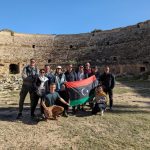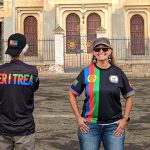Here’s YPT’s favourite moments in DPRK sport history.
-
Collision in Korea
Held in the incredible May Day Stadium, 1995’s Collision in Korea wasn’t so much a showcase of North Korean

wrestling talent as a demonstration of the building prowess of the country. The wrestling bash was co-hosted by the US organization WCW (World Championship Wrestling) and the Japanese outfit NJW (New Japan Wrestling) and to this day holds the record for the largest attended wrestling event ever. Over the space of two nights, 340,000 people flocked to the largest stadium in the world to watch such notable grapplers as Road Warrior Hawk, Wild Pegasus, The Steiner Brothers, Ric Flair, and even Muhammad Ali battle it out against Japanese opponents that included Antonio Inoki and Shinya Hashimoto.
With most matches consisting of a Japan v America theme, the side for whom the local crowd was cheering is anybody’s guess…In Media: Not too much available but there is a short video on You Tube
-
2012 London Summer Olympic Games

Although the North Korean people would probably rather forget the embarrassing flag incident from the London Games (think red and blue taegeukgi rather than red star), they will be only too happy to remember the incredible performances of their weightlifters, wrestlers and judoka who took a combined total of four gold medals and two bronze. This medal haul may not seem too impressive when placed beside that of a sporting superpower such as China but when considering a medal table based on each country’s GDP, these six medals puts the DPRK in a very impressive third place. Special mention should go to weightlifter Om Yun Chol who, by lifting 168kg, became only the 5th competitor ever to clean and jerk three times their own weight.
In media: Take a look at Kim un Guk smashing the world weightlifting record at the London Games
-
Arirang Mass Games
 No sporting list regarding the DPRK could ever be compiled without mentioning the choreographed wizardry of the Arirang Mass Games. Owing to the 100,000 plus performers that contribute to it, the Guinness Book of Records awarded the show a certificate bestowing the record of the Largest Gymnastic and Artistic Performance in the World. By encompassing incredible gymnastics and acrobatics against a backdrop of thousands of students displaying intricate flip card mosaics, the Arirang Mass Games allegorizes the division of Korea through the story of an in-love couple torn apart by an evil landlord. Unfortunately the Mass Games is in the midst of a hiatus but that shouldn’t stop you enjoying its magnificence through the wonderful world of You Tube.
No sporting list regarding the DPRK could ever be compiled without mentioning the choreographed wizardry of the Arirang Mass Games. Owing to the 100,000 plus performers that contribute to it, the Guinness Book of Records awarded the show a certificate bestowing the record of the Largest Gymnastic and Artistic Performance in the World. By encompassing incredible gymnastics and acrobatics against a backdrop of thousands of students displaying intricate flip card mosaics, the Arirang Mass Games allegorizes the division of Korea through the story of an in-love couple torn apart by an evil landlord. Unfortunately the Mass Games is in the midst of a hiatus but that shouldn’t stop you enjoying its magnificence through the wonderful world of You Tube.In Media: Catch the whole show right here, or for a look at the preparation leading up to the Mass Games, follow the lives of two eight year old gymnasts and their families in the fascinating documentary A State of Mind.
-
2000 Sydney Summer Olympic Games

This doesn’t make the list for any sporting achievement (in fact it was the DPRK’s worst ever Olympics performance) but rather for its success at pulling of the heartstrings of all who witnessed the opening ceremony. Although the Korean Unification Flag had been used at previous events, this was the first time it was used at the Olympics. The significance of this was lost neither on the crowd who gave a standing ovation as the Korean athletes walked hand in hand behind the blue solid outline of a unified Korea nor on the Australian commentator who described it as “one of the unforgettable moments of sport.”
In media: Emotional scenes as Korean athletes enter Stadium Australia under one flag.
-
1966 World Cup
 The World Cup is an event anticipated in the DPRK with the same enthusiasm as any other football loving nation but of course, this anticipation is all the more visible if their country has qualified for the tournament. Most recently, this happened in 2010 when DPR Korea managed to qualify for the South Africa tournament by finishing above Iran in the Asia qualifying stages. Being drawn in the same group as Brazil, Portugal and the Ivory Coast, did not do the 105th ranked team in the world any favors and as expected, they did not progress to the knockout stages of the world cup.
The World Cup is an event anticipated in the DPRK with the same enthusiasm as any other football loving nation but of course, this anticipation is all the more visible if their country has qualified for the tournament. Most recently, this happened in 2010 when DPR Korea managed to qualify for the South Africa tournament by finishing above Iran in the Asia qualifying stages. Being drawn in the same group as Brazil, Portugal and the Ivory Coast, did not do the 105th ranked team in the world any favors and as expected, they did not progress to the knockout stages of the world cup.Nevertheless, the fans in the North Korea are only too aware of the achievement of simply qualifying for the World Cup and as such, the players, upon their return, were treated as heroes (and not sent to coal mines as had been reported).
Rewind forty-four years to the 1966 World Cup in England a much different story unfolded. Taking place only thirteen years after the end of the Korean War, the DPRK was a country of which people knew very little. Nothing at all was expected of them but they sent the English fans wild when they beat Italy 1-0 in order to advance to the quarter-finals of the tournament. Once in the quarter-finals, they had to play Portugal and again had the world scratching their heads as they went 3-0 up by half time. The joy, however, was short-lived as the Portuguese scored five goals in the second half to win 5-3. As with the 2010 World Cup, the players were reported to have been punished for their failure to beat Portugal but as with the case forty-four years later, these allegations were shown to be unfounded.
Middlesborough, which hosted all of DPR Korea’s home games, still have close ties with North Korea and in 2010, the Middlesborough Ladies team became the first British team to travel to the country to take part in a football match.
In media: Incredible documentary entitled The Game of Their Lives reminisces with the seven surviving members of the DPRK 1966 World Cup team.



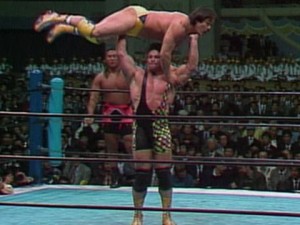
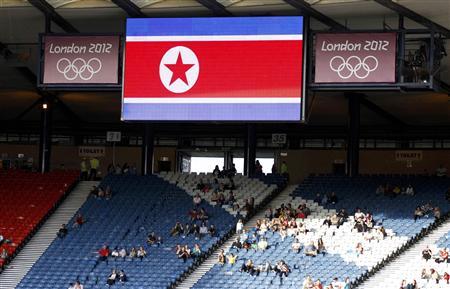
 No sporting list regarding the DPRK could ever be compiled without mentioning the choreographed wizardry of the Arirang Mass Games. Owing to the 100,000 plus performers that contribute to it, the Guinness Book of Records awarded the show a certificate bestowing the record of the Largest Gymnastic and Artistic Performance in the World. By encompassing incredible gymnastics and acrobatics against a backdrop of thousands of students displaying intricate flip card mosaics, the Arirang Mass Games allegorizes the division of Korea through the story of an in-love couple torn apart by an evil landlord. Unfortunately the Mass Games is in the midst of a hiatus but that shouldn’t stop you enjoying its magnificence through the wonderful world of You Tube.
No sporting list regarding the DPRK could ever be compiled without mentioning the choreographed wizardry of the Arirang Mass Games. Owing to the 100,000 plus performers that contribute to it, the Guinness Book of Records awarded the show a certificate bestowing the record of the Largest Gymnastic and Artistic Performance in the World. By encompassing incredible gymnastics and acrobatics against a backdrop of thousands of students displaying intricate flip card mosaics, the Arirang Mass Games allegorizes the division of Korea through the story of an in-love couple torn apart by an evil landlord. Unfortunately the Mass Games is in the midst of a hiatus but that shouldn’t stop you enjoying its magnificence through the wonderful world of You Tube.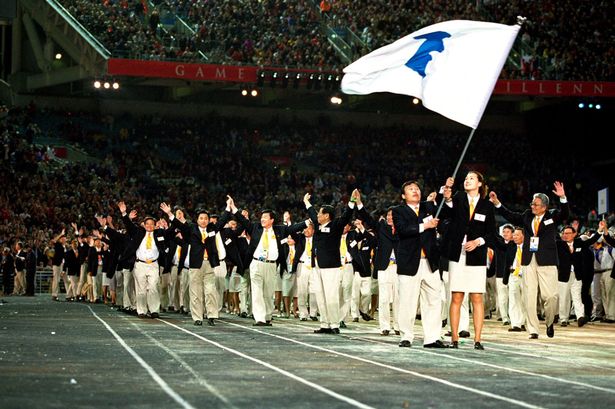
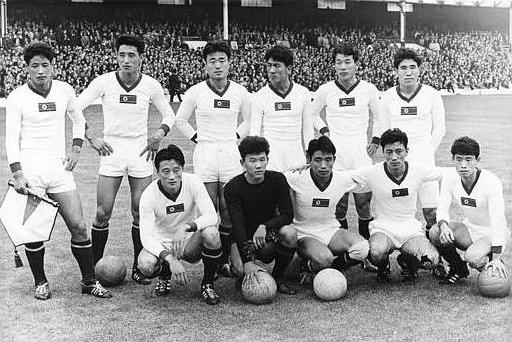 The World Cup is an event anticipated in the DPRK with the same enthusiasm as any other football loving nation but of course, this anticipation is all the more visible if their country has qualified for the tournament. Most recently, this happened in 2010 when DPR Korea managed to qualify for the South Africa tournament by finishing above Iran in the Asia qualifying stages. Being drawn in the same group as Brazil, Portugal and the Ivory Coast, did not do the 105th ranked team in the world any favors and as expected, they did not progress to the knockout stages of the world cup.
The World Cup is an event anticipated in the DPRK with the same enthusiasm as any other football loving nation but of course, this anticipation is all the more visible if their country has qualified for the tournament. Most recently, this happened in 2010 when DPR Korea managed to qualify for the South Africa tournament by finishing above Iran in the Asia qualifying stages. Being drawn in the same group as Brazil, Portugal and the Ivory Coast, did not do the 105th ranked team in the world any favors and as expected, they did not progress to the knockout stages of the world cup.
